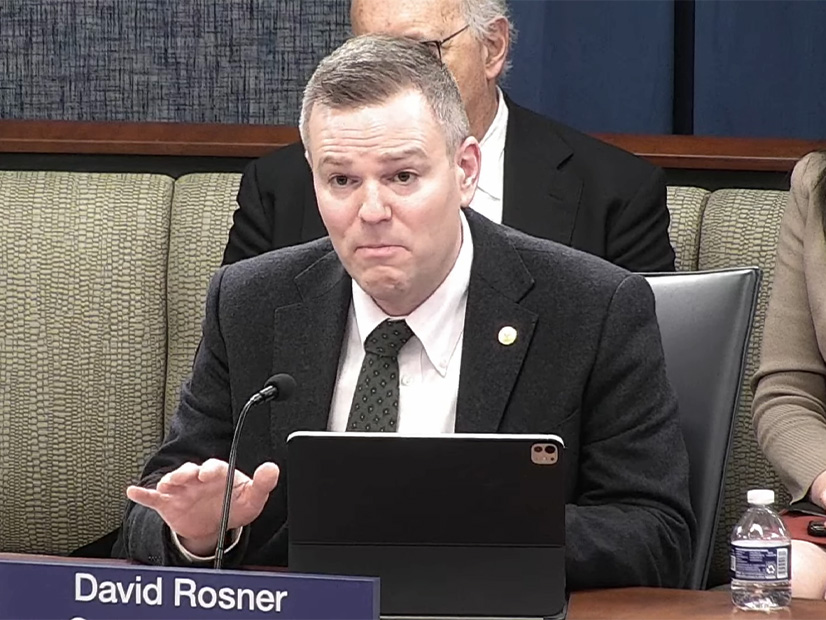FERC on Dec. 19 accepted NERC’s 2024 performance assessment while ordering a compliance filing in six months to explain how it will track its improvement in key areas (RR24-4).
In a separate filing issued during its last monthly open meeting of the year, the commission also proposed approving two reliability standards on protection settings and ride-through requirements for inverter-based resources (IBRs) after a 60-day comment period (RM25-3).
NERC submitted its performance assessment in July, as required by FERC regulations before it can be recertified as the ERO. (See NERC Submits Final Performance Assessment.) It covers 2019 to 2023, a time in which NERC said it strove to become a “nimbler organization while continuing to adapt to the changing needs of the electric industry.”
During the five-year cycle, the grid and the ERO Enterprise weathered the outbreak of the COVID-19 pandemic, several major severe weather incidents, the emergence of serious cybersecurity threats to grid reliability and the ongoing shift from traditional thermal generation to renewable resources. The assessment focuses on what NERC called its accomplishments in this context, in four areas:
-
- Energy: addressing challenges arising from the changing resource mix, providing sufficient energy and essential reliability services, improving system performance during extreme weather and adding transfer capability;
- Security: addressing cyber and physical security risks;
- Agility: becoming “nimbler” in risk identification and standards development; and
- Sustainability: investing in automation, eliminating single points of failure, and strengthening the ERO Enterprise’s long-term stability and success.
NERC also evaluated the regional entities’ performance, finding that they “satisfied the relevant statutory and regulatory criteria for delegation of … the ERO’s authorities.” In a supplemental filing, NERC discussed its work to improve the efficiency of its compliance monitoring and enforcement program (CMEP) and data collection. The ERO told FERC it plans to “establish metrics on noncompliance processing to ensure the streamlined compliance exception process produces the intended efficiencies.”
FERC found that the performance assessment satisfied its regulations and that NERC and the REs met the commission’s requirements. However, the commission also noted that NERC’s supplemental filing said the ERO is considering developing new performance metrics associated with the REs’ processing times.
To help this process along, FERC specified that NERC should develop metrics to track three areas:
-
- implementation and consistence of risk-based compliance monitoring practices;
- timeliness of violation processing; and
- reduction in subsequent serious risk violations stemming from similar issues as prior noncompliance.
The commission directed NERC to submit metrics for the reliability standards development program and implementation and oversight of the CMEP in a compliance filing within 180 days of its order.
IBR Standards Proposed for Adoption
FERC’s second NERC-related order concerned reliability standards PRC-024-4 (Frequency and voltage protection settings for synchronous generators, Type 1 and Type 2 wind resources, and synchronous condensers) and PRC-029-1 (Frequency and voltage ride-through requirements for IBRs).
The commission’s Notice of Proposed Rulemaking also proposed to adopt a new definition of “inverter-based resource” into the ERO’s Glossary of Terms.
NERC filed the two standards and definition with the commission Nov. 4, along with three more standards related to disturbance monitoring, reporting requirements and event mitigation for IBRs. The standards address the second milestone in FERC Order 901, issued Oct. 19, 2023. Milestone 2 standards cover performance requirements and post-event performance validation for registered IBRs. FERC did not mention the other three standards in its NOPR.
In addition to proposing to adopt the two standards and definition, the commission also proposed directing NERC to file two informational filings after they go into effect. These relate to a provision in PRC-029-1 that allows exemptions to the voltage and frequency ride-through requirements for legacy IBRs — resources that are already in operation when the standard goes into effect. Entities would have 12 months after the effective date of the standard to request an exemption.
FERC said it is curious about “the volume of exemptions, the circumstances in which entities have invoked the exemption provision and ultimately … what, if any, effect the exemption provision has on the efficacy of” the standard. The filings would be due 12 and 24 months after the conclusion of the exemption request period and would provide information on the total number of:
-
- IBRs and their capacity for which generator owners will be subject to compliance;
- IBRs and their capacity for which GOs requested exemptions;
- IBRs and their capacity for which NERC granted exemptions;
- granted exemptions by their type (voltage or frequency) and aggregated capacity; and
- granted exemptions by IBR type and their capacity.
FERC will accept comments on the NOPR for 60 days after its publication in the Federal Register. At the meeting, Commissioners Judy Chang and David Rosner both encouraged industry stakeholders to share their thoughts so that FERC can make an informed decision.
“We’re threading the needle here, aimed at balancing the need to mitigate risk and make sure we have accurate information [and] get this decision right,” Rosner said. “So I look forward to seeing comments there.”



